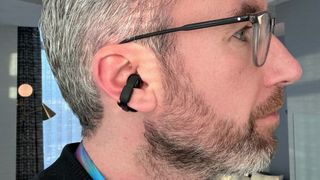News
Explore News
-
Audio News
-
Computing News
-
Earbuds and Airpods News
-
Health & Fitness News
-
News about Cameras
-
News about Fitness Trackers
-
News about Headphones
-
News about Laptops
-
News about Phones
-
News about Small Appliances
-
News about Smartwatches
-
News about Tablets
-
News about The Home
-
News about iPads
-
Smart Home News
-
Television News
Latest about News

GameStop is down for many — here's everything we know so far
By Jacob Krol last updated
GameStop appears to be having some trouble loading in the late morning on January 21, 2026, with the site not launching for some – so stick with TechRadar's live reporting on the outage.

Netflix is gearing up for a new mobile update, and it involves a vertical video feed.
By Rowan Davies published
There's a new Netflix update coming to mobile, and it's bringing a new vertical feed to your account.

Marseille vs Liverpool Free Streams: How to watch Champions League 2025/26 online from anywhere
By Adrian Back published
News All the ways to watch Marseille vs Liverpool live streams online and from anywhere, as both teams look to secure three vital Champions League points.

How to watch The Traitors US Season 4 — free streams from anywhere
By Aatif Sulleyman last updated
News Candiace Dillard Bassett, Lisa Rinna and Rob Rausch are thoroughly enjoying themselves at Ardross Castle. Here's how to watch The Traitors US season 4 online.

Australian Open 2026 Free Streams: TV Channels, Full Schedule and Preview for Opening Grand Slam – Sinner, Djokovic, Swiatek and Osaka all in Round 2 action on Day 5
By Andy Murray last updated
News Watch free tennis streams from Melbourne Park in the season's first grand slam – 2026 Australian Open TV channels, broadcasters and streams.

How to watch Love Island: All Stars season 3 — free streams from anywhere after explosive recoupling and secret kiss reveal
By Caroline Preece last updated
News Charlie made a bold move, Tommy’s speech turned brutal, a public vote is set to dump an Islander, and Blue are teased for tonight. Here’s how to stream on ITVX and watch abroad with a VPN.

I've picked the top 3 SSDs you should buy now to avoid price rises
By Darren Allan published
High-end SSDs have already shot up in price, and more affordable models are likely to follow, so the time to buy is now.

DOGE might have misused Social Security data, Trump administration admits
By Ellen Jennings-Trace published
Employees might have shared SSNs to help an advocacy group try to “overturn election results in certain States”.
Sign up for breaking news, reviews, opinion, top tech deals, and more.

